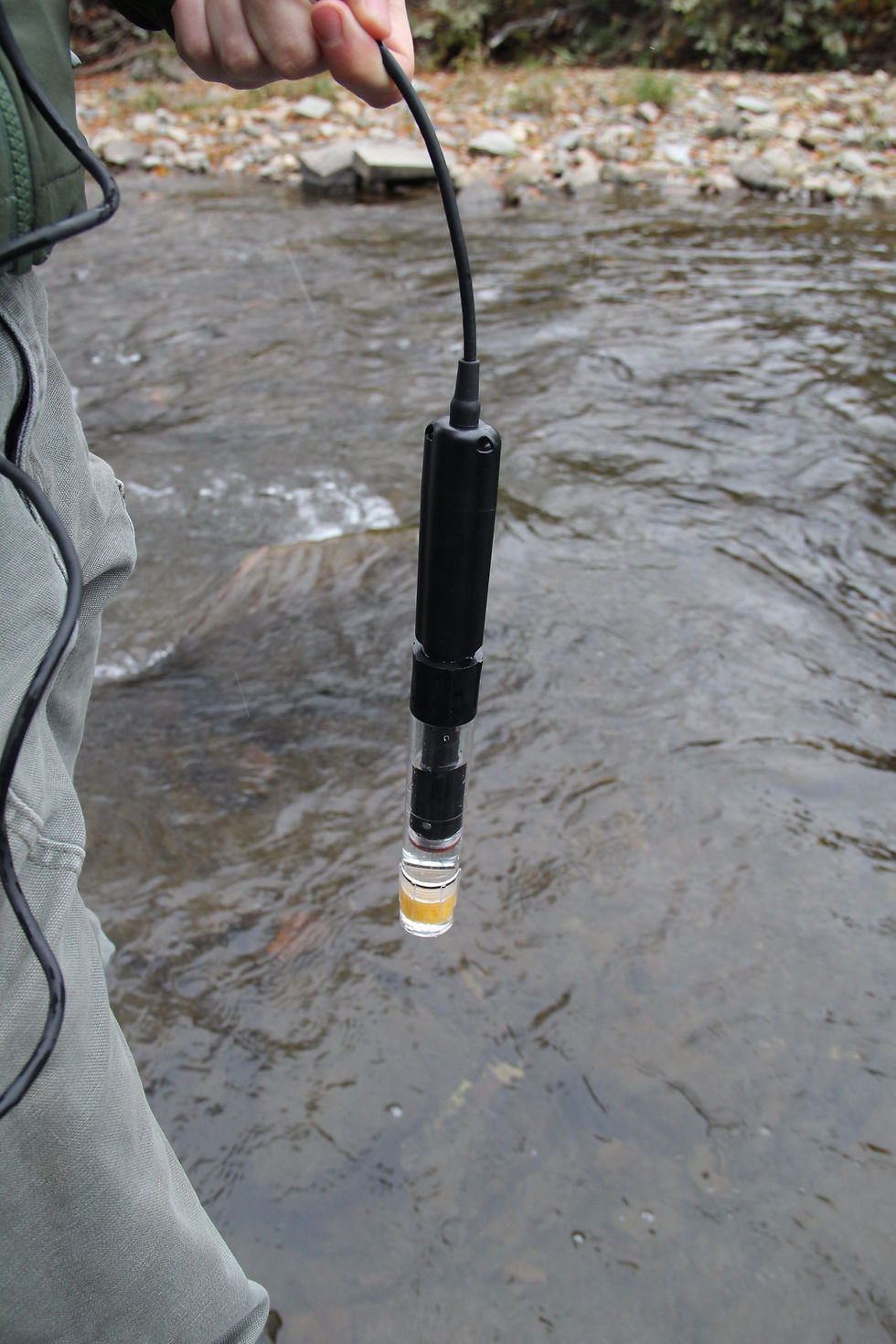Testing Round 1
- vincentpolhemus
- Oct 31, 2018
- 2 min read

Over the past couple weeks we have been working on field testing sections of the Dog River. After a long drive up Warren Mountain we finally got close to the beaver pond that feeds the Dog River. With snow flurries in the air we hiked in to where two tributaries connected and tested the water. It was crystal clear but freezing cold which seemed to be the case for many sites. The next location was the Northfield Country Club which the Dog River cuts right through the middle of. Golf Courses use lots of fertilizers, so Phosphates and Nitrates are expected at high levels since the whole golf course flows into the river. The next site was located just before the waste water treatment plant near the town municipal garage. This point will be used as a basis for the next location just past the water treatment plant in order to determine if the plant is discharging chemicals into the river. The farthest we have made it down the Dog so far is the Cox Brook covered bridge. The rest of the river will be completed this weekend and all samples will be tested. We took samples from each location to be tested in the lab for Phosphorus, Nitrates, Turbidity and ph.
The next step will be to compare all the results and determine if there are any point sources of contaminants in the Dog River. In order to get a better understanding we would need to take a lot more tests than we are. Our basis is to determine how much the river changes throughout its whole journey and compare the outlet with the source. This data can also be used to determine how well organisms are living within the water. Our group started today with construction of our display model. The mock fish tank will be separated into 6 sections with different Dissolved Oxygen levels. Each section will represent the level of life that will be found at the corresponding DO level. Different sections will also represent the concentration of chemicals causing the decrease of DO. Community children will be able to learn about the effects of these chemicals and the change in DO throughout the river.




Comments